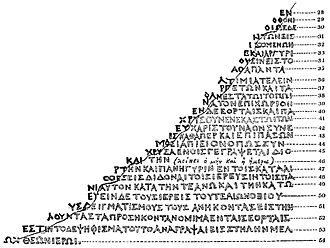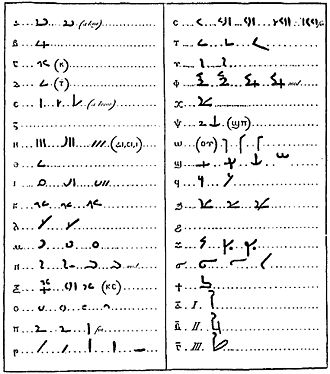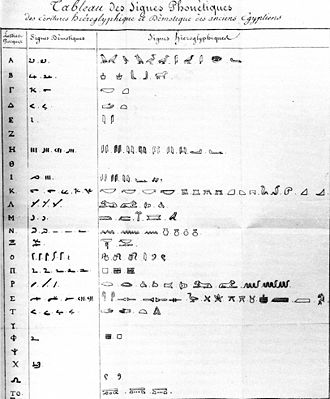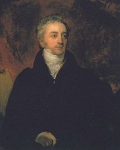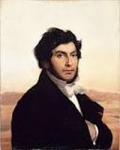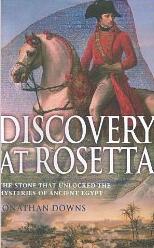- Latest Archaeology Updates
- Importance and applicability
- Famous Archaeologists
- Museums Collections
- Site Map
- World Heritage Sites
- World History Monuments
- Archaeological Organizations
- World Atlas of Archaeology
- Forensic Investigation and Geophysics
- Contact Us
- Movies based on Archaeology
- Frequently Asked Questions
- Archaeological discoveries
- Tell a Friend
- Archaeological Abbreviations
- Gallery Collections
- Famous-Museums site map
- Famous-archaeologists site map
- Archaeological Monuments site map
The Rosetta Stone is a language-learning software program designed to help learners acquire new languages. The program utilizes interactive activities, audio recordings, and pictures to help users learn new words and phrases in foreign languages. The software also contains speech recognition technology, which allows users to practice their pronunciation and receive feedback from native speakers. Rosetta Stone is available in more than 30 languages and is suitable for users of all abilities, from beginners to advanced learners.
A granodiorite stele, which is a type of igneous rock. It is approximately 114 cm (45 in) high, 72 cm (28 in) wide, and 28 cm (11 in) thick. It weighs approximately 760 kg (1,676 lbs). Its surface is covered with text written in three languages:Ancient Egyptian hieroglyphic, Demotic, and Ancient Greek . The text is inscribed in a form of Egyptian and Greek called "boustrophedon," which means that the text is written in alternating directions.
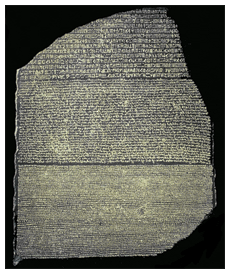
The Memphis Decree is an ancient Egyptian document that was issued by Pharaoh Ptolemy V in 196 BC. It was discovered in 1799 near the city of Memphis, Egypt, and is now known as the Rosetta Stone.
The Memphis Decree is written in three scripts: Egyptian hieroglyphs, Egyptian demotic, and Greek. This is significant because these three scripts correspond to three different levels of Egyptian society: royalty, priests, and ordinary citizens. The presence of all three scripts on the Rosetta Stone made it possible for scholars to decipher hieroglyphs, which had been lost for centuries.
The Memphis Decree itself is a royal decree issued by Pharaoh Ptolemy V in 196 BC. It establishes a series of taxes and rewards various temples throughout Egypt. It also establishes the cult of Ptolemy V, and declares him as the son of the sun god, Ra.
The Memphis Decree is an important document in the context of the Rosetta Stone because it was the key to understanding the hieroglyphs that were inscribed on the stone. The presence of all three scripts on the Rosetta Stone gave scholars the ability to compare the scripts and decipher the hieroglyphs. This allowed scholars to gain access to the ancient Egyptian language, and to learn more about the culture and history of ancient Egypt.
In 1799, the Rosetta Stone was discovered in the Egyptian town of Rosetta by French soldiers. The stone was a large slab carved with three different scripts, including Ancient Greek and hieroglyphics. It was vital in deciphering the meaning of ancient Egyptian hieroglyphics, as the Ancient Greek on the stone provided the key to understanding the symbols. After Napoleon's defeat in Egypt, the stone was taken to Britain where it has been housed in the British Museum since 1802.
The Rosetta Stone is an ancient artifact, inscribed with a decree issued in 196 BC on behalf of King Ptolemy V of Egypt. It is one of the most famous artifacts in the British Museum's collection and is a vital historical object which helped scholars decipher the hieroglyphic writing of ancient Egypt.
The Rosetta Stone is an ancient Egyptian artifact discovered in 1799 by French soldiers that helped scholars to finally figure out how to read hieroglyphics.
- One in hieroglyphics.
- One in demotic script.
- The last in Ancient Greek.
It is a black granodiorite stela, or stone slab, inscribed with three translations of a single passage.
The inscription is a decree from the Egyptian priests of Memphis,praising Ptolemy V for his generosity and kindness to the people of Egypt.
The importance of the Rosetta Stone is that it finally allowed scholars to decipher hieroglyphics, as the same passage was written in three different languages. By comparing the three translations, scholars could figure out what different symbols meant in each language. This breakthrough allowed them to read hieroglyphics and unlock ancient secrets that had been hidden in the language for centuries.
The Rosetta Stone is now housed in the British Museum in London, and is one of the most famous artifacts in the world. It is a symbol of the power of knowledge and understanding, and a reminder of the importance of preserving our past.
The Greek text of the Rosetta Stone is a royal decree from Ptolemy V Epiphanes, issued in 196 BC at Memphis, Egypt. It is written in three scripts: the upper text is Ancient Egyptian hieroglyphs, the middle portion Demotic script, and the lowest is Ancient Greek. The decree concerns the repeal of various taxes and the liberation of some religious ceremonies and temples.
The decree of Ptolemy V, Epiphanes, son of Ptolemy IV, and of Queen Cleopatra I, his mother, given in the ninth year, the sixth of the month of Phamenoth.
The Rosetta Stone is a fragment of a larger stele written in 196 BC. It is written in three scripts: The upper text is Ancient Egyptian hieroglyphs, the middle portion Demotic script, and the lowest Ancient Greek. This provided the key to deciphering hieroglyphs. The inscription records a decree that was issued at Memphis, Egypt in 196 BC on behalf of King Ptolemy V. The decree concerns the repeal of various taxes and instructions to temple priests.
The decree of Memphis, the most-holy city, the great metropolis of Egypt, the place of the Residence of the King of Upper and Lower Egypt, Men-maat-Ra, Son of Ra, the Lord of the Two Lands, given to the priests, the prophets, and the people, from the House of Life, to be established for ever.
In the late 19th century, Rosetta Stone experienced a resurgence in popularity. This was due in part to the rise of the "English language" as an international language. As a result, more and more people were looking for ways to learn English, and Rosetta Stone was one of the most popular options. However, Rosetta Stone also faced a number of rivals. The main competitor was English-language instruction software developed by the British Council, which was released in the early 1990s. This software was much more comprehensive than Rosetta Stone, and also had the advantage of being officially endorsed by the British government.
The Rosetta Stone and the Rebirth of Ancient Egypt (Wonders of the World) Written By John Ray .
A wonderful introduction not only to the Rosetta Stone and its story, but also to the growth and development of modern Egyptology.
The gripping tale of the discovery of the Rosetta Stone, the artifact that opened up ancient Egypt and triggered a struggle for cultural supremacy.
Amesbury Archer (or King of Stonehenge) is an early Bronze Age man, dating to around 2300 BC. His grave is of particular importance because of the rich valuables and the earliest gold objects ever found in England.
Otzi the Iceman is well naturally preserved mummy of a man. The man who was been captured in Ice was believed to be over 53 centuries old (3300 BC).
Java man is an interesting discovery to note that the find was not a complete specimen, but consisted merely of a skullcap, a femur, and three teeth. Many scientists of the day even suggested that Dubois' Java Man might have been the so-called "missing link
Kennewick Man is the name for the remains of a prehistoric man found on a bank of the Columbia River near Kennewick, Washington, on July 28, 1996. The Kennewick Man news story is one of the most significant archaeology stories of contemporary times.
Neandertal1 or Neanderthal was a species of genus Homo (Homo neanderthalensis) that inhabited Europe and parts of western Asia during the last ice age.
Peking Man (sometimes now called Beijing Man), also called Sinanthropus pekinensis (currently Homo erectus pekinensis), is an example of Homo erectus.
The Red Lady of Paviland is a fairly complete Upper Paleolithic-era human male skeleton dyed in red ochre, discovered in 1823 by Rev. William Buckland in one of the Paviland limestone caves of the Gower Peninsula in south Wales, dating from c29,000.
The Tollund man lived during the late 5th century BC and/or early 4th century BC, about 2,400 years . He was buried in a peat bog on the Jutland Peninsula in Denmark, a find known as a bog body.
Turkana Boy, the designation given to fossil KNM-WT (Kenya National Museum-West Turkana), is a nearly complete skeleton of a 12-year-old hominid boy who died 1.6 million years ago.Turkana Boy is classified as either Homo erectus or Homo ergaster.
The Dead Sea Scrolls are a collection of about 850 documents, including texts from the Hebrew Bible, which were discovered in eleven caves near Qumran, in a fortress northwest of the Dead Sea in Israel.
The Narmer Palette, or Great Hierakonpolis Palette, is a significant Egyptian archeological find, dating from about 3200 BC, containing some of the earliest hieroglyphic inscriptions ever found, and depicting the unification of Upper and Lower Egypt under Narmer.
Rosetta Stone is a dark granite stone (often incorrectly identified as "basalt") which provided modern researchers with translations of ancient text in Egyptian demotic script, Greek, and Egyptian hieroglyphics.
Linear B is the script that was used for writing Mycenaean, an early form of the Greek language. It occurrs primarily on tablets dated from the 14th and 13th centuries BC.
The Sweet Track is an ancient roadway in the Somerset Levels, England. As of the early 2000s, it is the oldest known engineered roadway in the world. An grand footpath that ran for almost 2km across the Somerset levels swamps.
Tautavel Man is an ancestor of Neanderthal man, was slightly different from his contemporaries living Asia and Africa. In the village of Tautavel is located in the South of France, one of the most ancient humans was found: the Tautavel Man.
The Galilee Boat which is also referred as the "Jesus Boat" was found by local Galilean inhabitants in January 1986. The boat was wrapped in a polyurethane shell and then immersed in a special tank of water to avoid quick disintegration.
The monumental Ekron inscription is dated, statistically and historically, to the first half of the seventh century B.C.E. The five lines of the inscription are together with this in a slit open border.
It wasn't long back when a lot of scholars were quizzical the real survival of a Roman Governor with the name Pontius Pilate, the procurator who ordered Jesus' crucifixion. In June 1961 close to Caesarea-on-the-Sea (Maritima) was unearthed this appealing limestone block.
In 1990 ornately decorate limestone ossuary (bone depository) was found in Jerusalem's Peace Forest. In the ossuary were the bones of two babies, a adolescent child, a teenage boy, an adult woman, and a man about 60years of age.
In biblical Israel, papyrus was the main form of writing substance. Once an authorized deed was written, it would be rolled up, one end crinkled in one-third of the width and the contrary end likewise folded in.
It is the Capital city of a prehistoric principality in what these days is on the northern part of the Syrian coast, just north of the city of Latakia.

